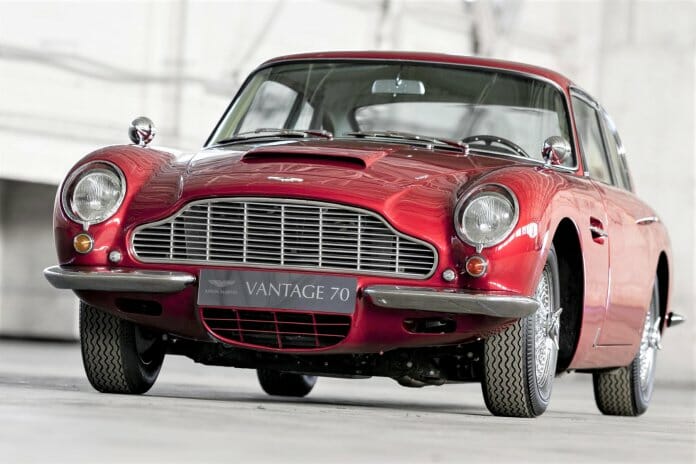Aston Martin this year celebrates the 70th anniversary of its mightiest member, the high-performance Vantage variations of its sports/luxury motorcars.
“The name Vantage proudly sits on more than a third of all the sports cars ever made by the luxury British brand,” according to a news release from the British automaker. “Spanning seven decades and covering some of the company’s most revered sports cars, the Vantage family forms a crucial part of the ever-evolving Aston Martin story.
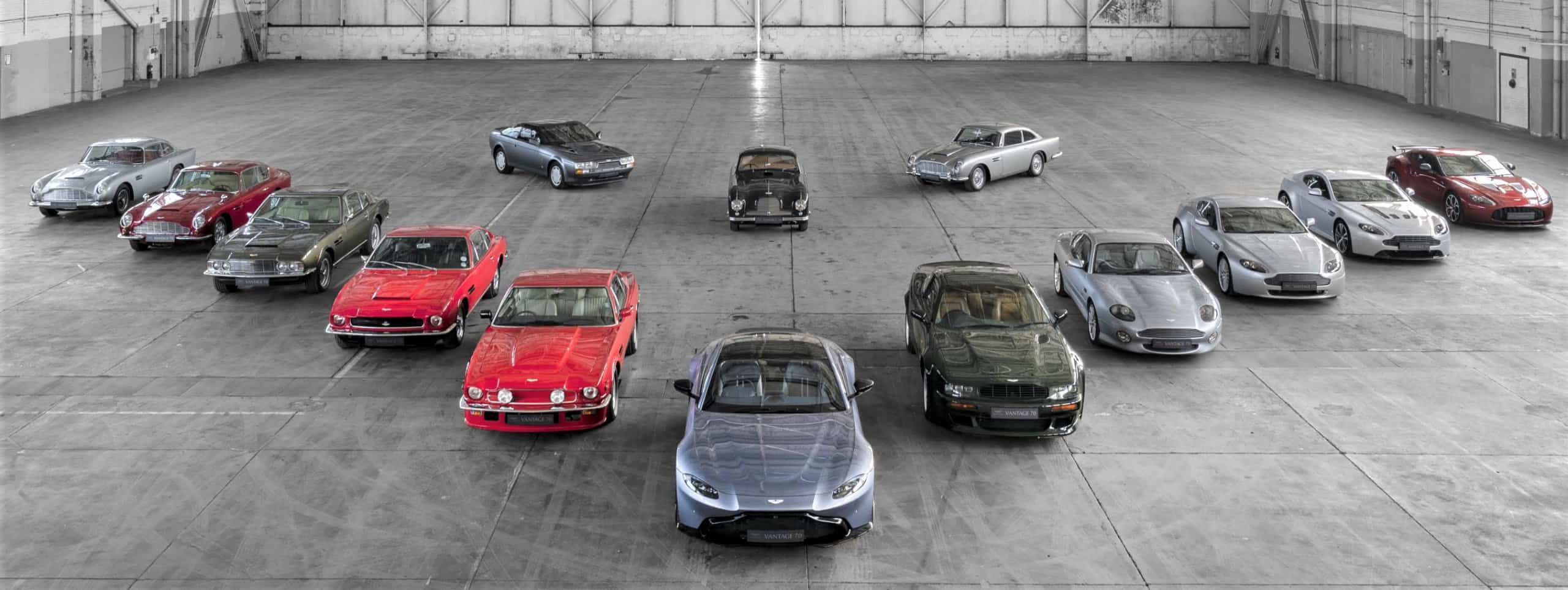
The nameplate began in 1950 with the launch of the Aston Martin DB2 with Vantage specification, which offered raised performance from the marque’s famous Lagonda inline-6 engine. It continues today with Aston’s most-exotic supercars.
“Today’s Vantage and Vantage AMR sports cars represent the latest interpretation of what this single, yet incredibly evocative, word means to drivers around the world,” Aston Martin Lagonda president and group chief executive Andy Palmer said in the release.
“As we celebrate 70 years of Vantage in 2020, it allows us to delight in our superb sports car heritage. Vantage has always stood for engineering ambition, thrilling performance and exceptional beauty, and I’m pleased that today’s models more than live up to the standards set by their iconic forebears.”
Key model from seven decades of Vantage performance models (with descriptions from Aston Martin) include:
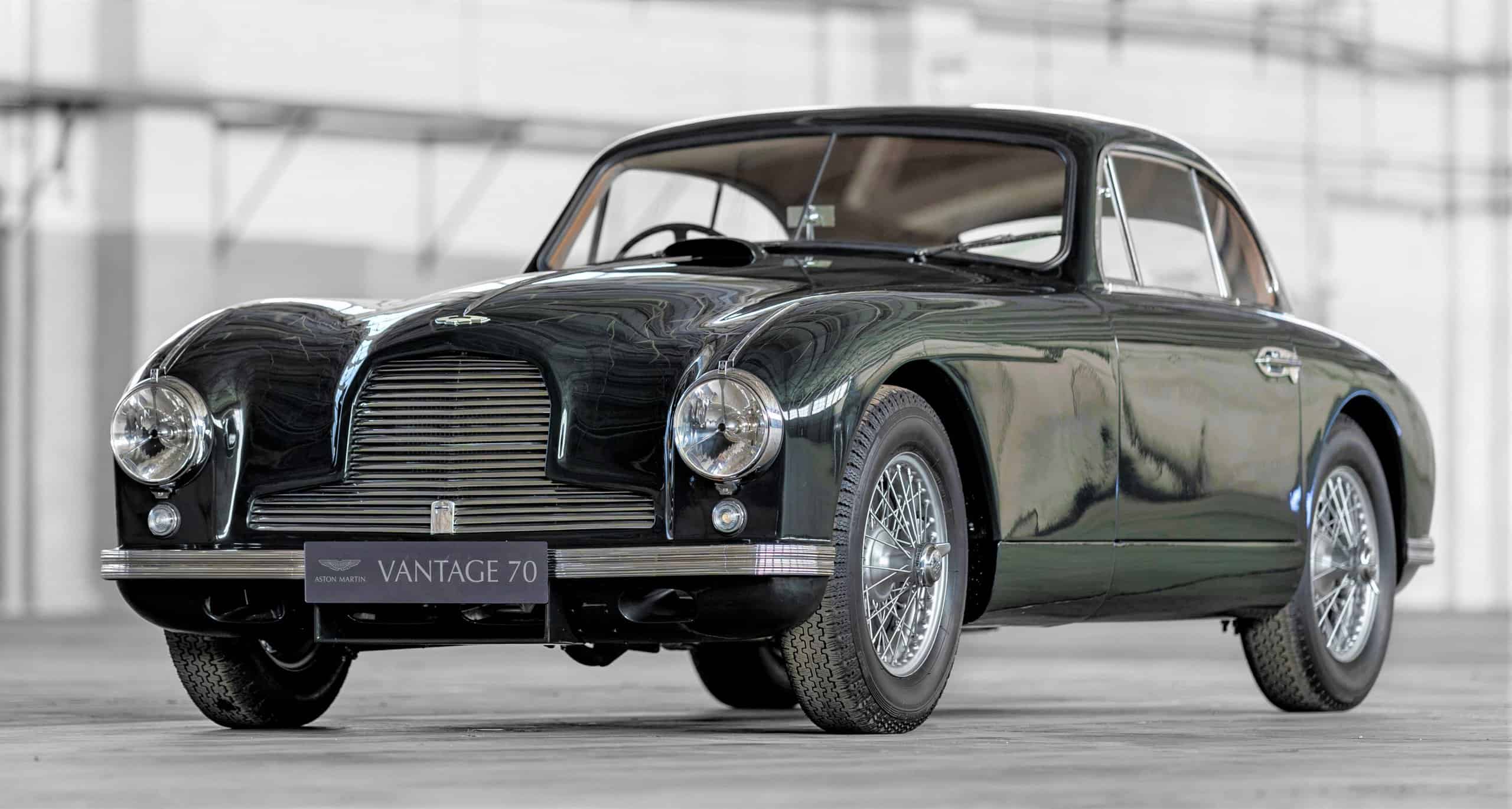
DB2 with Vantage specification
The word Vantage first appeared alongside the Aston Martin brand name in 1950, with the debut in that year of the Aston Martin DB2 with Vantage specification.
As with many of the early uses of the Vantage appellation, the title stood for a car with an uprated engine. In this instance, it referred to the use of larger SU HV6 carburetors and a higher 8.16:1 compression ratio in the car’s 2.6-liter Lagonda engine. These enhancements combined to achieve a heady 125 hp at 5,000 rpm, thereby significantly outstripping the ‘standard’ DB2’s circa 105bhp. Just shy of 250 of these augmented DB2 Vantages, both saloons and drophead coupes, were manufactured at the brand’s then factory in Feltham, Middlesex.

DB4 Vantage
The DB4 Vantage made its debut with the start of the DB4 Series IV cars in 1961 and, unlike its trailblazing predecessor it is distinguishable visibly, as well as technically, from its ‘standard’ siblings.
Key to this Vantage was the fitting of the ‘Special Series’ engine which features not two but three SU HD8 carburetors and revised cylinder heads with bigger valves and a higher compression ratio. The block remains the same as that of the standard car. Power was quoted at the time as 266 hp, a useful increase of about 10 per cent over the 240bhp of the Tadek Marek-designed 3.7-liter aluminum straight-6 powering the non-Vantage enhanced DB4.

DB5 Vantage
It was no surprise, perhaps, that when the DB5 appeared in 1964 it would soon give rise to a Vantage version of its own. However, it might be more surprising to learn that only 68 cars of a total production run of 887 4.0-liter DB5 saloons were fitted with the optional Vantage engine, equipped with triple Weber carburetors and good for 325 hp – 40 more than available in the standard car.
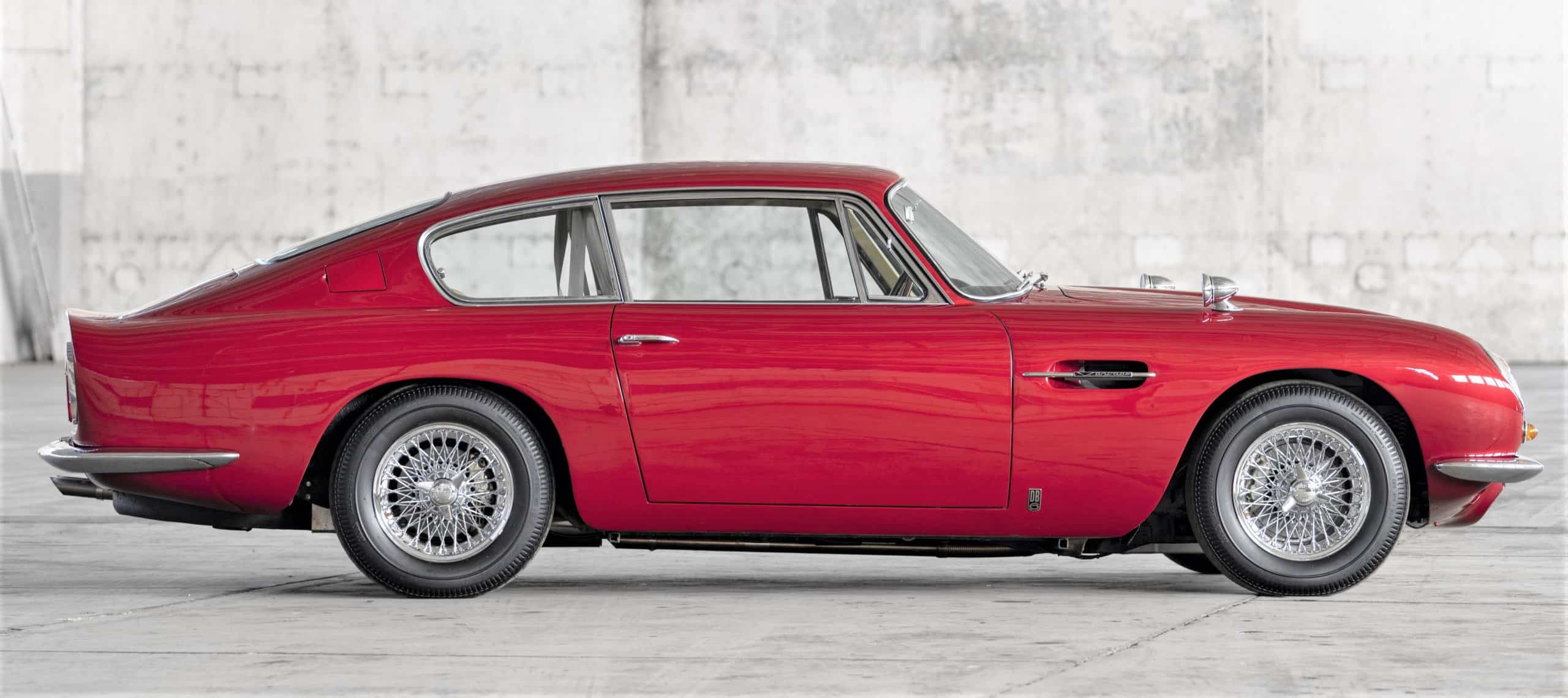
DB6 Vantage
The DB6 Vantage came next, in Mk I and Mk II versions, and followed the same tried and trusted upgrade formula as its potent predecessors. It utilized the same 4.0-litre straight six as it’s DB5 predecessor, with the same 325bhp output. The car is also again badged as a Vantage – a practice which began with the DB5 – with a discreet but important piece of nomenclature added to the side strakes.
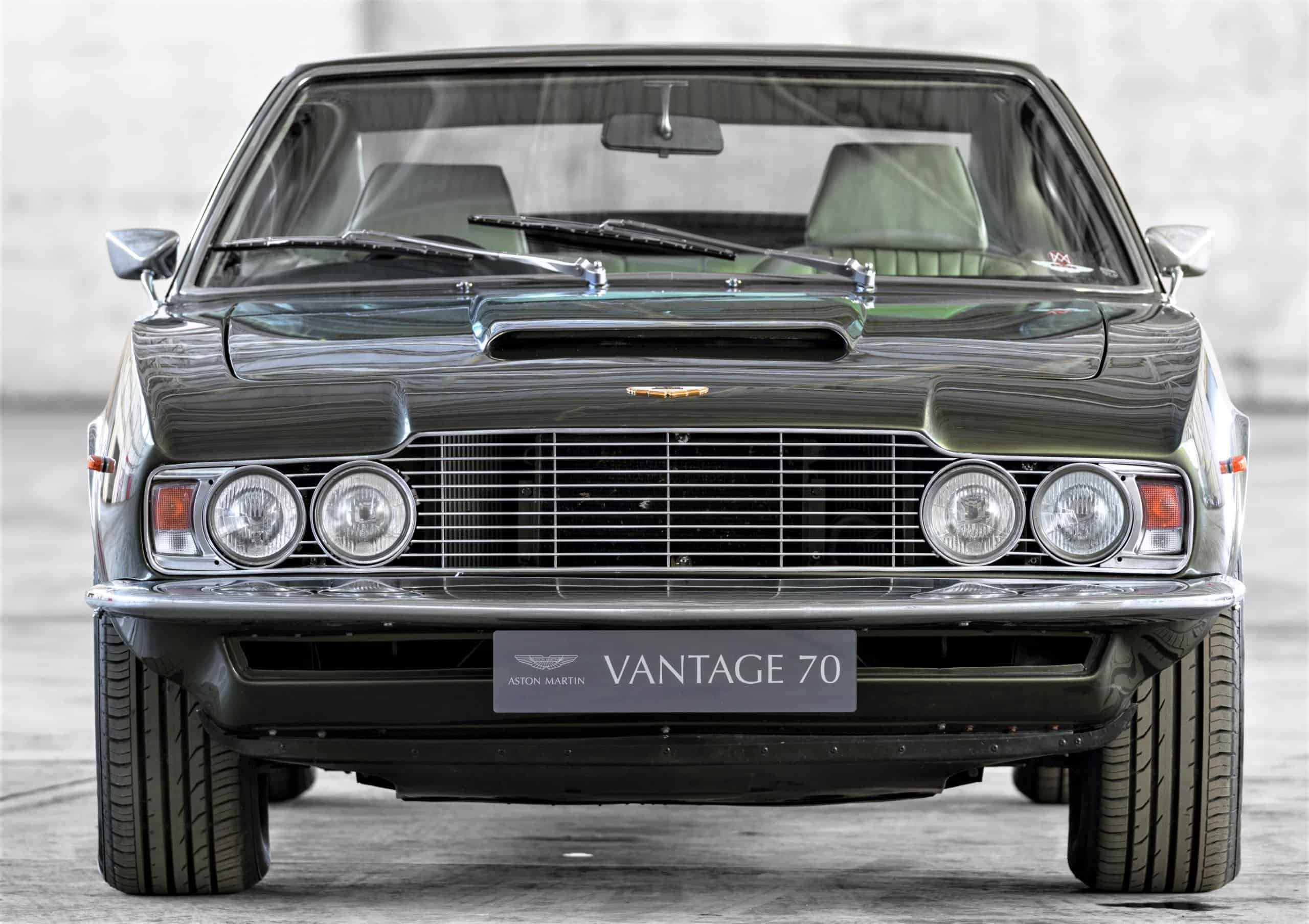
DBS Vantage and AM Vantage
If the DB4, DB5 and DB6 represented evolutionary Aston Martin design, the arrival of the next Vantage-engine model in 1967, the DBS, signified a real revolution. British stylist William Towns, a then junior Aston Martin interior designer, penned the angular, ‘modern’ shape that, in its original guise, retained the now familiar six-cylinder, 3,995cc Tadek Marek engine, available in Standard or Vantage form as used in DB6. The original plan had been to use a new V8 engine, but this was not ready in time.
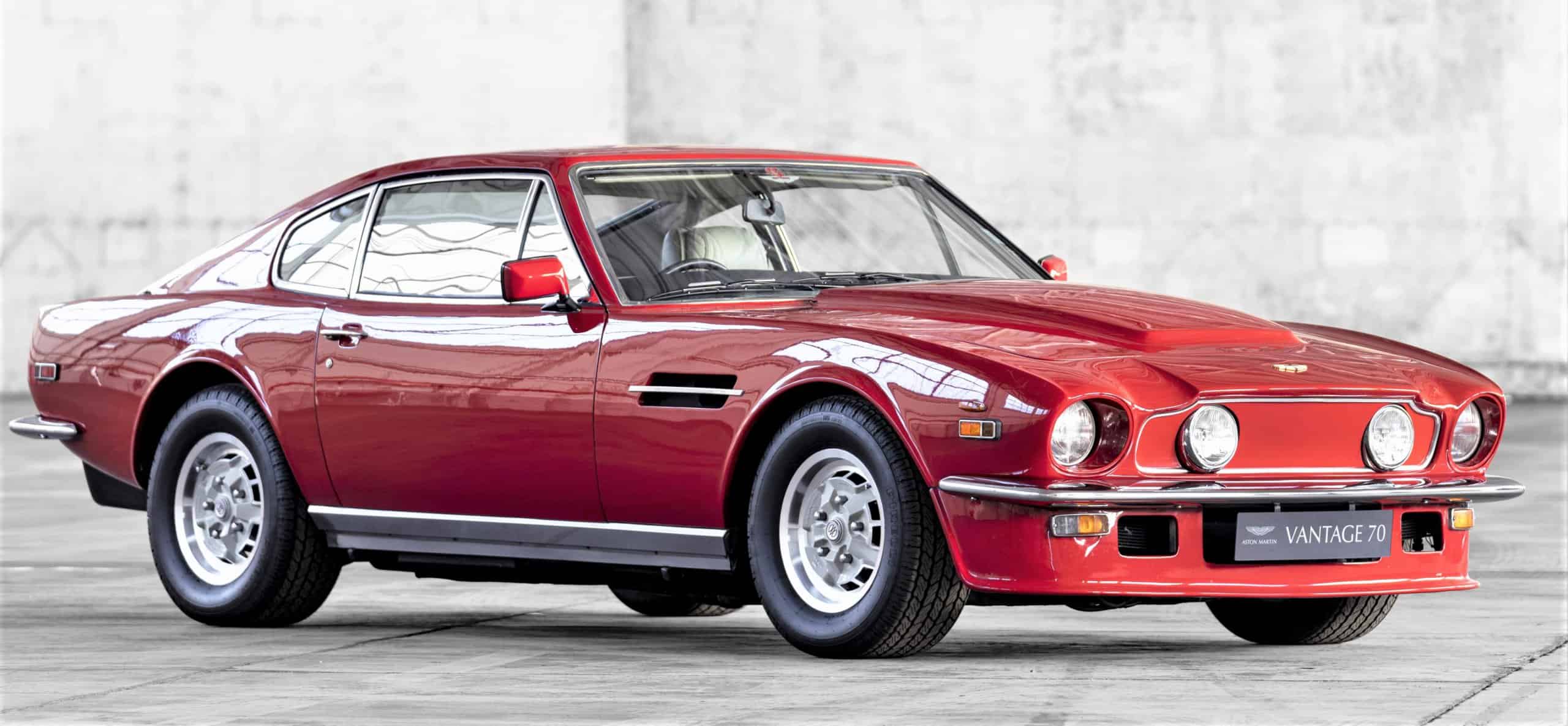
V8 Vantage and V8 Vantage Zagato
The next Aston Martin Vantage – indeed the original Aston Martin V8 Vantage – was cut from very different engineering and performance cloth. It was hailed at its 1977 introduction as “Britain’s first supercar.” It could outrun a Ferrari Daytona in the 0-60 mph sprint, and if pushed to the limit it could record a top speed of 170 mph.
Its engine was shared with the Lagonda luxury saloon of the day, but it used high-performance camshafts, an increased compression ratio, larger inlet valves and bigger carburetors mounted on new manifolds for increased output.
Critical to the huge performance leap of this Vantage was a significant upgrade to the V8 engine which in the contemporary AM V8 was offering something in the order of 300 hp.
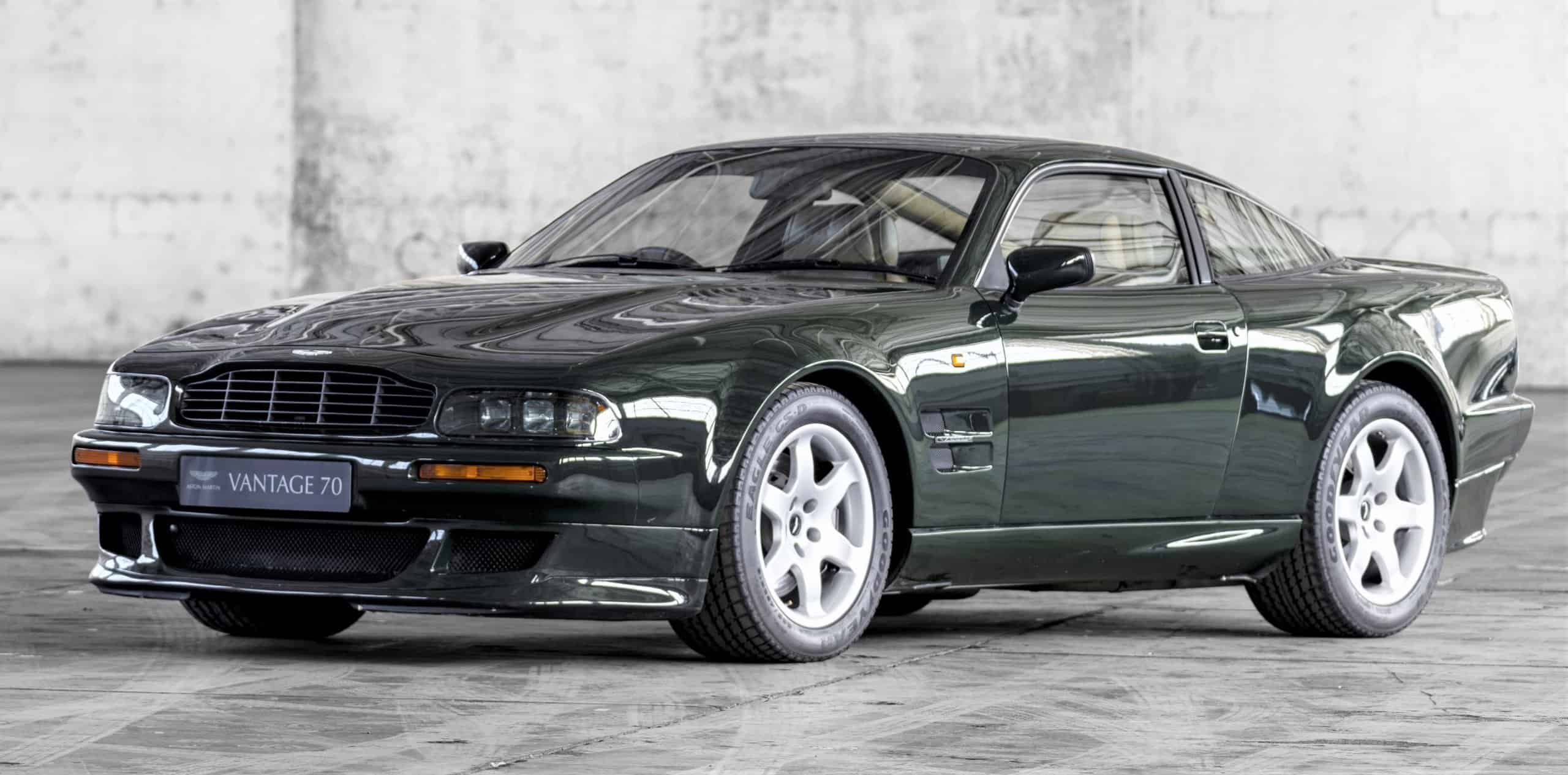
V8 Vantage V550 (Supercharged)
In the 1990s the British brand continued its commitment to “brute in a suit” sports car style with the appearance on the Virage-based Vantage – often referred to as the supercharged Vantage – in 1993 and, later, the next iteration of the V8 Vantage.Aston Martin V8 Vantage V550 (2)
Heavyweight in every sense, this Vantage tips the scales at 1,990 kg. It sports no fewer than six headlights and boasts massive 362mm diameter ventilated discs and four piston AP Racing calipers at the front: at the time, the largest brakes fitted to a road car.
Naturally such a luxuriously appointed grand tourer requires a substantial power source and in this case, it takes the form of a 5,340cc V8 with not one but two Eaton superchargers. With 550 hp and 550 lb-ft of torque, this was, at the time, the most powerful production powerplant in the world. In V600 form, as unveiled late in 1998, and additional 50bhp became available.

DB7 V12 Vantage
The DB7 became the next Aston Martin to sport the Vantage badge when, in 1999, the DB7 V12 Vantage made its debut at the Geneva Motor Show. Comprehensively restyled by designer Ian Callum, it boasts a 5.9-liter, 48 valve, all-alloy, V12 engine delivering 420 hp and 400 lb-ft of torque developed in close co-operation with the Ford Research and Vehicle Technology Group and Cosworth Technology.

V8 Vantage (VH architecture)
That same year, again at the Geneva Motor Show, the world got its first glimpse of the AMV8 Vantage Concept, the car that would, in time, go on to become the next proud member of the Vantage clan.
Two years later, in 2005, the production version of the V8 Vantage was unveiled and on the strength of the concept alone, order books were already bulging.
This V8 Vantage was the second Aston Martin production car based on the now famous VH architecture – first seen on the DB9 – but it was the first to use a new 4.3-liter, quad-cam, 32-valve dry-sump V8 engine. Power was quoted at 380 hp at 7,000 rpm and torque of 302 lb-ft was on offer at 5,000 rpm. This allows the 1,570 kg machine a 0-60 mph time of 4.9 and 0-100 mph in 10.7 with the standard 6 speed Graziano manual gearbox.
Later, this iteration of V8 Vantage gained an enlarged 4.7-liter powerplant capable of generating 420 hp and 346 lb-ft of torque. This, quite naturally, cut the 0-60 mph time to a mere 4.7 seconds and added 5 mph to the top speed, taking it to 180 mph.
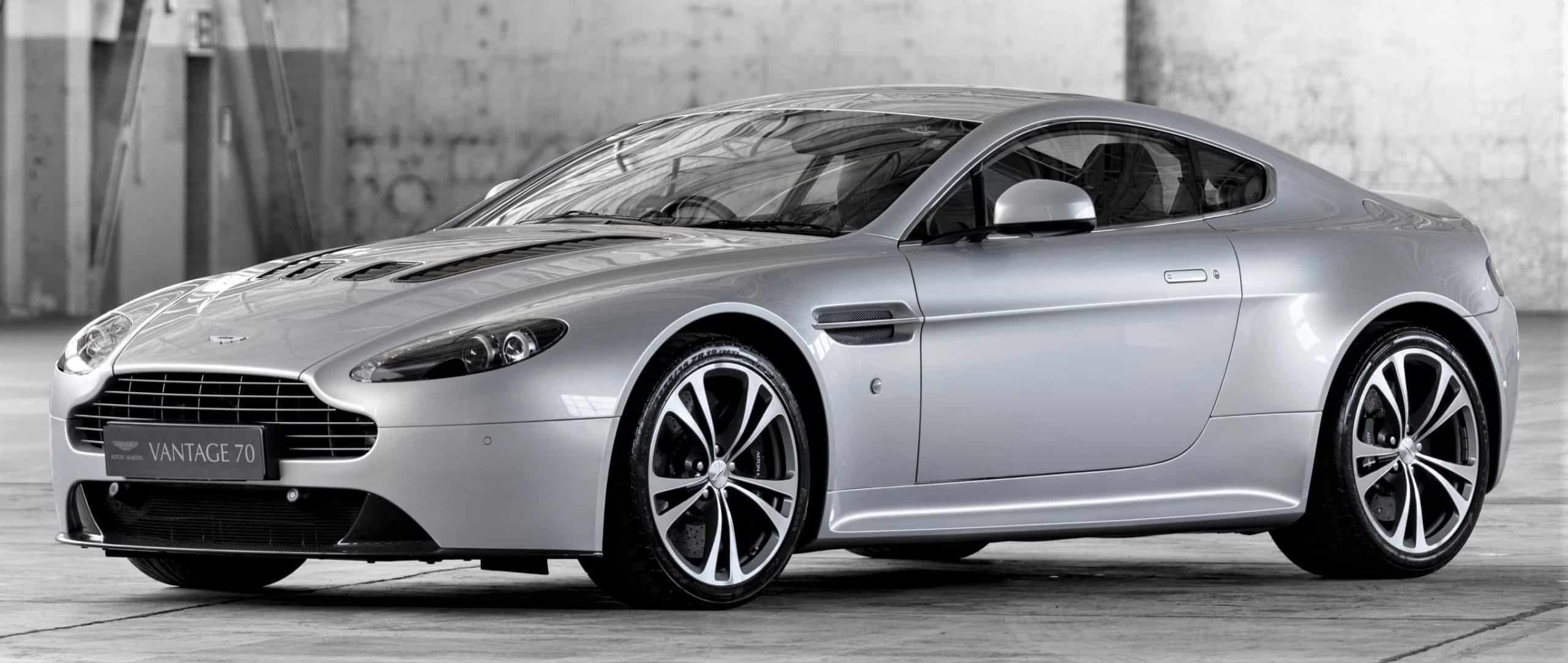
V12 Vantage
In 2009, Aston Martin unveiled one of the most iconic and desirable cars yet to join the Vantage club: the V12 Vantage. Previewed by the V12 Vantage RS concept car unveiled at the opening of the brand’s new Design Centre at its Gaydon global headquarters in December 2007, the production car again generated huge demand virtually instantly.
Weighing only around 50 kg more than its V8 sibling, but boasting the front mid-mounted, all-aluminum-alloy V12 also seen in the DBS of the day, the V12 Vantage was unashamedly potent. Its 5,935cc engine benefits from quad overhead camshafts with four valves per cylinder, helping it to generate a not inconsiderable 510 hp at 6,500rpm, with a maximum torque figure 420 lb-ft at 5,750 rpm.
On the road and mated to a six-speed manual gearbox, this means a 0-60 mph time of 4.2 seconds, and an autobahn blistering top speed of 190 mph.
Not satisfied with a ‘simple’ V12 Vantage, Aston Martin engineers challenged themselves to create a yet more potent car which came to fruition in 2013 with the unveiling of the V12 Vantage S.
Here, power is hiked to 565 hp, torque stands at a mighty 457 lb-ft, and the 0-60 mph time is a ferocious 3.5 seconds with the car’s urge channelled through a Sportshift III automated manual gearbox. But the thing that made this car even more of a headline grabber when it appeared was its top speed. At 205 mph, it became the fastest production car Aston Martin had yet offered to the public.
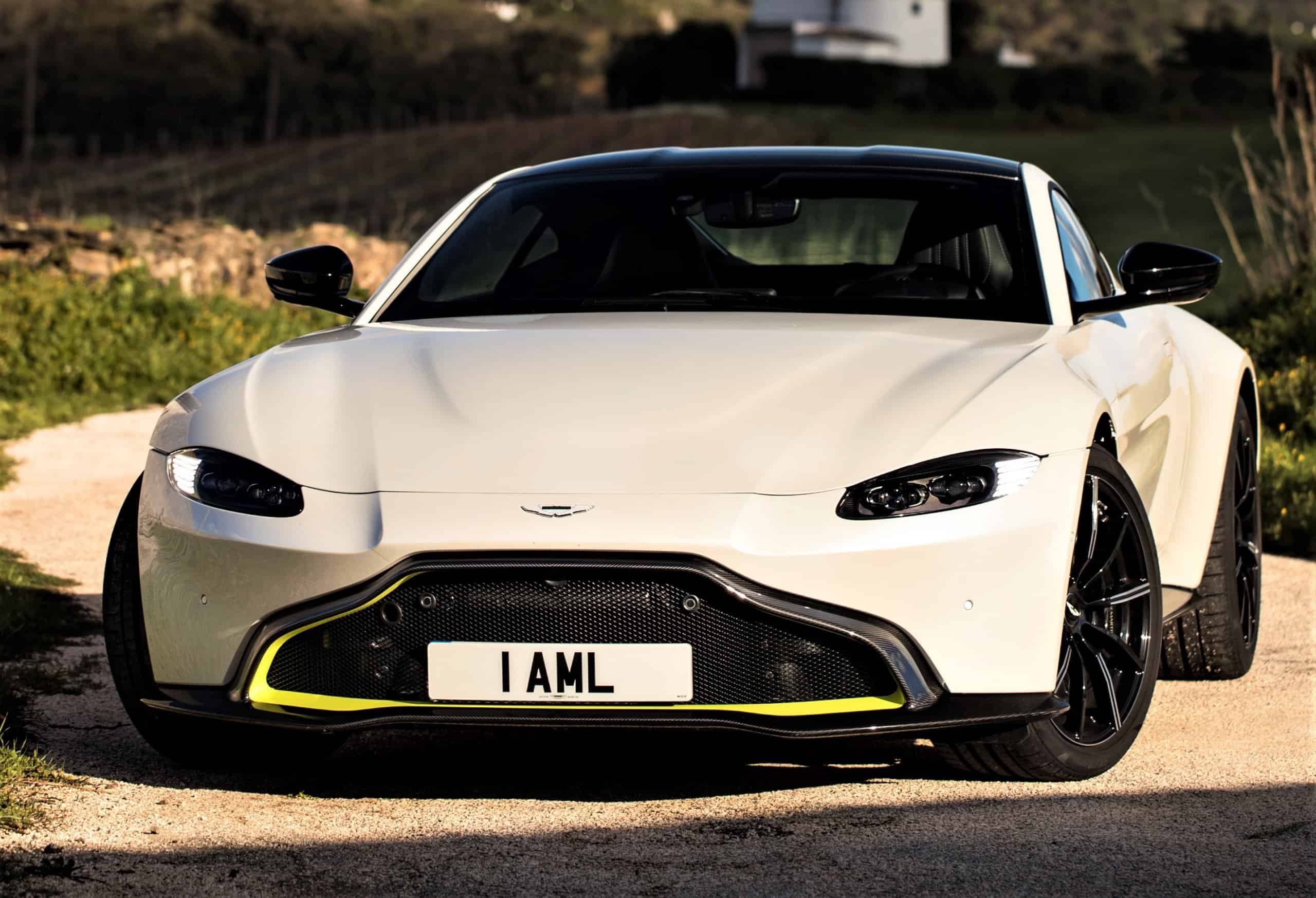
Vantage (current car)
Today’s cutting-edge Vantage two-seater sports car is based on the marque’s latest architecture. Styled for aerodynamic excellence as well as obvious curb appeal, the car features a 4.0-liter twin-turbocharged V8 engine with a peak power output of 503bhp and a torque peak of 505 lb-ft, mated to a rear-mounted 8-speed automatic gearbox manufactured by ZF.
This endows the current Vantage with a distinctly brisk 0-60 mph time of 3.5 seconds, and supports a top speed of 195 mph.
This Vantage is also the first Aston Martin production car to include an electronically controlled differential with torque vectoring – E-Diff – and is built around the same all-new bonded-aluminum platform as DB11.



